#hoary foxes
Text

Brehm's Tierleben. Written by Alfred Brehm. 1900 edition.
Internet Archive
99 notes
·
View notes
Text
Lycalopex vetulus
The hoary fox is part of the lycalopex genus, meaning they aren’t real foxes and are more closely related to coyotes and jackals. They share the lycalopex genus with the sechuran fox from the previous post and four other “false” foxes.

Hoary foxes are endemic to Brazil. This means they are native to Brazil and they aren’t found anywhere else. They are specifically native to the Cerrado of Brazil, which is a huge tropical savanna.
These foxes get their name from the color hoary, which is grayish-white like the foxes’ fur. In Brazil they are called raposinha-do-campo, which is Portuguese for “meadow fox.”
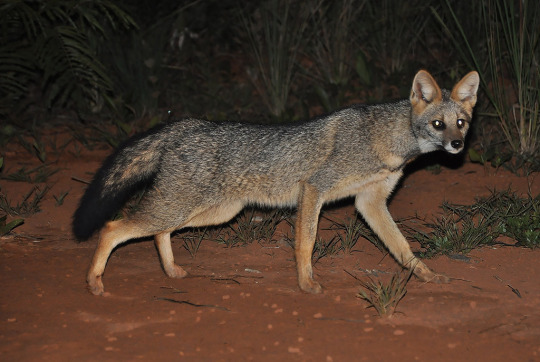
Weighing from 6 to 9 pounds (3 to 4 kg), hoary foxes are roughly the same size as a house cat. The foxes’ slender build allow them to be very agile and fast, making them efficient hunters. They are omnivores, hunting small rodents, birds, and reptiles, although most of their diet consists of fruit and insects.
Like the Sechuran fox, hoary foxes are solitary until the breeding season and when they have kits. They have very small litters that they raise in a den. Usually this den is taken over from an animal like an armadillo.
I rate the hoary fox 14/10. They have cool tails and their ears are the perfect fit for them
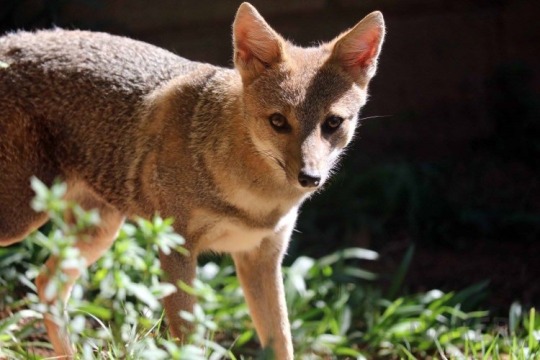

Photo credits:
(1) Unknown (2) Arthur Anker (3) Nayer Youakim (4) Joel Sartore
#hoary fox#fox#animals#biology#nature#science#wildlife#zoology#animal#dog#dogs#wild#foxes#hoary foxes#South American fox#zorro
310 notes
·
View notes
Text

I like bats a normal amount
#ok to reblog#The Flying Fox#Flying Fox#The Fruit Bat#Fruit Bat#The Wrinkle-faced Bat#Wrinkle-faced Bat#The Vampire Bat#Vampire Bat#The Hoary Bat#Hoary Bat#The Hammer-headed Bat#Hammer-headed Bat#The Brown Bat#Brown Bat#The Silver-haired Bat#Silver-haired Bat#The Spotted Bat#Spotted Bat#The Pallid Bat#Pallid Bat#The Eastern Red Bat#Eastern Red Bat#bat fun#bat meme#bats#bat#chiroptera
3K notes
·
View notes
Photo

A hoary fox (Lycalopex vetulus) in Emas National Park, Brazil
by Art
#hoary fox#false foxes#raposas#zorros#canines#Lycalopex vetulus#lycalopex#canidae#carnivora#mammalia#chordata#wildlife: brazil
562 notes
·
View notes
Text



Part two of my animal headshot series, bridging the gap between foxes and dogs by exploring Lycalopex and some of the smaller genera— Chrysocyon, Atelocynus, Cerdocyon, Speothos, Otocyon, and Nyctereutes!
#grey fox#island fox#crab-eating fox#bat-eared fox#culpeo#zorro chilote#pampas fox#sechuran fox#hoary fox#maned wolf#bush dog#short eared dog#chilla#tanuki#common raccoon dog#fox#canine#vex art#headshot project
49 notes
·
View notes
Text

custom design comm for @marblerose-rue
88 notes
·
View notes
Text
the 10 living species of foxes that aren't true foxes (in the genus vulpes) but are more closely related to wolves and jackals but we still call them foxes i love you

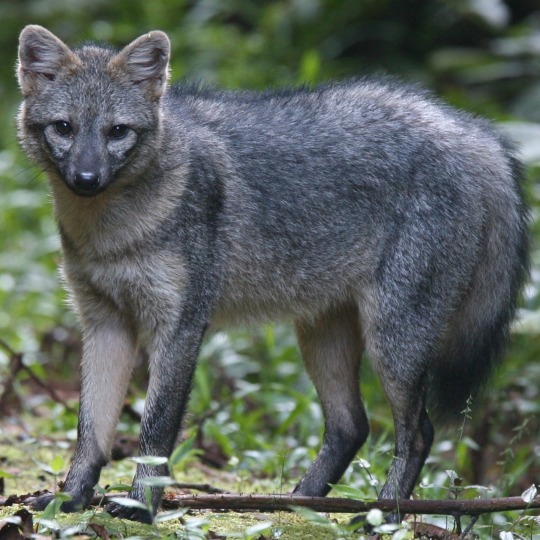







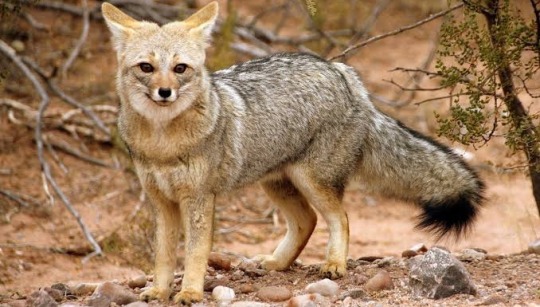
#☆#🐯#bat-eared fox (otocyon megalotis)#crab-eating fox (cerdocyon thous)#hoary fox (lycalopex vetulus)#sechuran fox (lycalopex sechurae)#pantagonian fox (lycalopex griseus)#darwin's fox (lycalopex fulvipes)#culpeo (lycalopex culpaeus)#grey fox (urocyon cinereoargenteus)#island fox (urocyon littoralis)#pampas fox (lycalopex gymnocercus)#canid
14 notes
·
View notes
Text
Lycalopex Vetulus
The hoary fox is part of the lycalopex genus, meaning they aren’t real foxes and are more closely related to coyotes and jackals. They share the lycalopex genus with the sechuran fox from the previous post and four other “false” foxes.

Hoary foxes are endemic to Brazil. This means they are native to Brazil and they aren’t found anywhere else. They are specifically native to the Cerrado of Brazil, which is a huge tropical savanna.
These foxes get their name from the color hoary, which is grayish-white like the foxes’ fur. In Brazil they are called raposinha-do-campo, which is Portuguese for “meadow fox.”

Weighing from 6 to 9 pounds (3 to 4 kg), hoary foxes are roughly the same size as a house cat. The foxes’ slender build allow them to be very agile and fast, making them efficient hunters. They are omnivores, hunting small rodents, birds, and reptiles, although most of their diet consists of fruit and insects.
Like the Sechuran fox, hoary foxes are very solitary until the breeding season and when they have kits. They have very small litters that they raise in a den. Usually this den is taken over from an animal like an armadillo.
I rate the hoary fox 14/10. They look friendly.


Photo credits:
(1) Unknown (2) Arthur Anker (3) Rafael Martos Martins (4) Joel Sartore
#hoary fox#fox#zorro#zoology#biology#science#nature#wildlife#world#animal#animals#foxes#south america
73 notes
·
View notes
Text

World Animal Day
What is your favorite memory of an animal interaction in the park? Seeing a Cascade fox or mountain goat for the first time? Laughing at the antics of a marmot? Listening to bird song in the early morning, or watching bats swoop silently in the calm of an evening? Mount Rainier National Park is charged with protecting the wildlife of the park, just like the park protects the meadows, forests, glaciers, and the mountain itself. These treasures are preserved for their own sake but also so that you and future generations can experience them. However, these animals can only be protected with your help. Please stay on trails to protect habitat, drive carefully on park roads, dispose of trash responsibly, and do not feed any animals to help Keep Wildlife Wild. Thank you!
NPS Photo of a sooty grouse, hoary marmot, Cascade frog, and Cascade red fox. ~kl
#World Animal Day#mount rainier national park#wildlife#keep wildlife wild#sooty grouse#hoary marmot#Cascade frog#Cascade red fox
47 notes
·
View notes
Text

If you've been following my fic, you know exactly what this is about
If you haven't, I'm not elaborating, just appreciate this, it took me an hour
#fallen london#my writing#these are my headcanons for inspirations for bat species for the masters lol#pictured:#wines: grey-headed flying fox#iron: hoary#spices: eastern red#hearts: vampire but this is basically canon with skies#pages: big brown bat#fires: malayan flying fox#nothing brings the masters together like screaming at each other#fl spoilers#i guess but i feel most people know they're bats by now
25 notes
·
View notes
Text
Species: South American Canids (Speothos, Chrysocyon, Lycalopex, Cerdocyon, Atelocynus)
This series focuses on helping people choose interesting species for their fursona through informing them of the many, often overlooked, species out there! This post is about South American canids, including false foxes.
──── ◉ ────
Bush Dog (Speothos venaticus)

The bush dog has 3 subspecies:
South American Bush Dog (Speothos venaticus venaticus)
Panamian Bush Dog (Speothos venaticus panamensis)
Southern Bush Dog (Speothos venaticus wingei)
It is oddly hard to find pics of the different subspecies, sorry
Size: 20-30cm (8-12in) height (at shoulder), 57-75cm (22-30in) lenght, 12-15cm (5-6in) tail lenght, 5-8kg (11-18lbs) weight
Diet: carnivorous, preys on large rodents
Habitat: lowland forests, wet savannahs, open pastures
Range:

Status: near threatened
──── ◉ ────
Maned Wolf (Chrysocyon brachyurus)

Size: 90cm (35in) height (at shoulder), 100cm (39in) lenght, 45cm (18in) tail lenght, 23kg (51lbs) weight
Diet: omnivorous, preys on small/medium mammals, birds, fish; eats fruit, tubers, sugarcane, other plants
Habitat: savannahs
Range:

Status: near threatened
──── ◉ ────
Hoary Fox (Lycalopex vetulus)

Size: 58-72cm (23-28in) lenght, 25-36cm (9-14in) tail lenght, 3-4kg (6-8lbs) weight
Diet: omnivorous, preys on invertebrates, rodents, birds; eats fruit
Habitat: woodlands, bushlands, savannahs
Range:

Status: near threatened
──── ◉ ────
Sechuran Fox (Lycalopex sechurae)

Size: 50-78cm (20-31in) lenght, 27-34cm (11-13in) tail lenght, 2.6-4.2kg (5.7-9.3lbs) weight
Diet: omnivorous, varied. Preys on invertebrates, rodents; eats carrion, fruit, seed pods
Habitat: deserts, dry forests, beaches
Range:
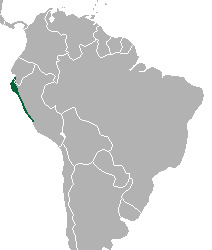
Status: near threatened
──── ◉ ────
Darwin's Fox (Lycalopex fulvipes)
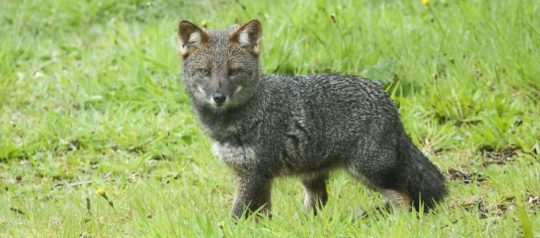
Size: 48-59cm (19-23in) lenght, 17-25cm (7-10in) tail lenght, 1.8-3.9kg (4-8.7lbs) weight
Diet: omnivorous, preys on invertebrates, small mammals, reptiles; eats fruit
Habitat: southern temperate rainforests
Range:

Status: endangered
──── ◉ ────
Pampas Fox (Lycalopex gymnocercus)

Size: 51-80cm (20-31in) lenght, 2.4-8kg (5.3-17.6lbs) weight
Diet: omnivorous, preys on birds, small mammals, invertebrates; eats carrion, fruit
Habitat: montane forests, dry scrublands, wetlands
Range:

Status: least concern
Please note! The pampas fox has 3 subspecies!
──── ◉ ────
South American Grey Fox (Lycalopex griseus)

Size: 65-110cm (26-43in) lenght including 20-43cm (8-17in) tail lenght, 2.5-5.4kg (5.5-12lbs) weight
Diet: omnivorous, preys on small mammals, birds, reptiles, invertebrates; eats carrion, fruit
Habitat: varied; scrublands, steppes, forests
Range:

Status: least concern
──── ◉ ────
Culpeo (Lycalopex culpaeus)

Size: 95-132cm (37-52in) lenght including 32-44cm (13-17in) tail lenght, 5-13.5kg (11-30lbs) weight
Diet: carnivorous, preys on lagomorphs, small mammals
Habitat: varied; temperate rainforests, forests, scrublands, deserts
Range:

Status: least concern
Please note! The culpeo has 5 subspecies!
──── ◉ ────
Crab-Eating Fox (Cerdocyon thous)
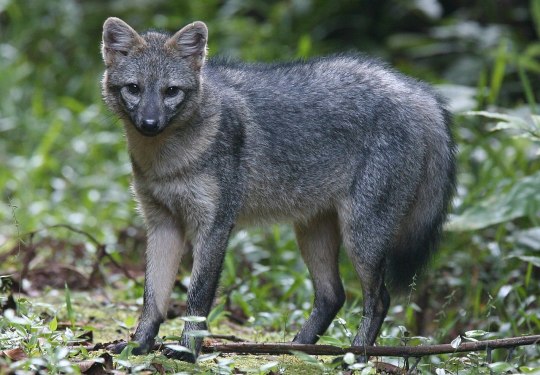
Size: 64cm (25in) lenght, 28cm (11in) tail lenght, 4.5-7.7kg (10-17lbs) weight
Diet: omnivorous, preys on crabs, small mammals, birds, crustaceans, invertebrates, reptiles; eats carrion, fruit
Habitat: savannahs, woodlands, subtropical forests, shrublands
Range:

Status: least concern
Please note! The crab-eating fox has 5 subspecies!
──── ◉ ────
Short-Eared Dog (Atelocynus microtis)

Size: 72-100cm (28-39in) lenght, 9-10kg (19-22lbs) weight
Diet: mostly carnivorous, preys on fish, invertebrates, small mammals, birds; eats fruit
Habitat: rainforests, lowland forests, swamp forests, cloud forests
Range:
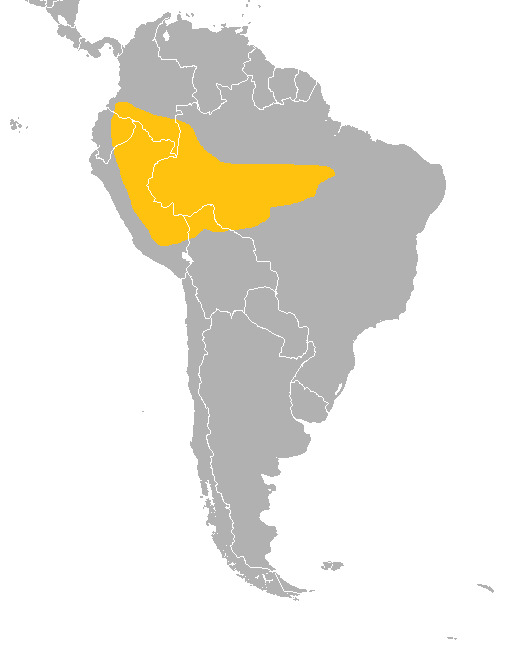
Status: near threatened
Please note! The short-eared dog has 2 subspecies!
──── ◉ ────
#fursona resources#furry#fursona#species#canidae#canine#speothos#chrysocyon#lycalopex#cerdocyon#atelocynus#bush dog#maned wolf#fox#foxes#false foxes#hoary fox#sechuran fox#darwin's fox#pampas fox#south american grey fox#culpeo#crab-eating fox#short-eared dog
7 notes
·
View notes
Text
Bat Stickers Printable!
I made a printable version of my bat stickers! Please enjoy.
https://ko-fi.com/s/cacf86faa4
#Bat#Stickers#Printables#bats#i love bats#flying fox fruit bat#golden crowned fruit bat#honduran white bat#small brown bat#Northern long eared bat#Hoary bat#Vampire Bat
0 notes
Text
Types of fox bois
Siberian fox [x] [x]


Corsac fox [x] [x]

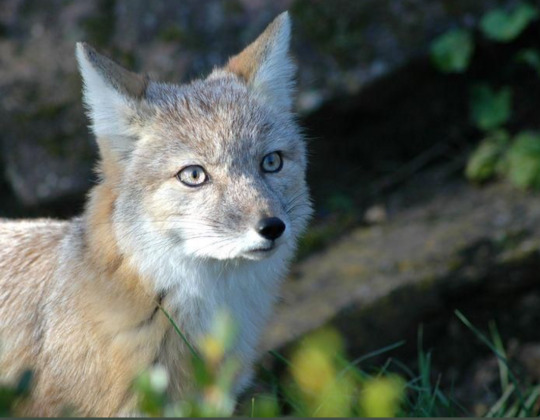
Rüppell’s fox [x] & [x]


Kit Fox [x] [x]
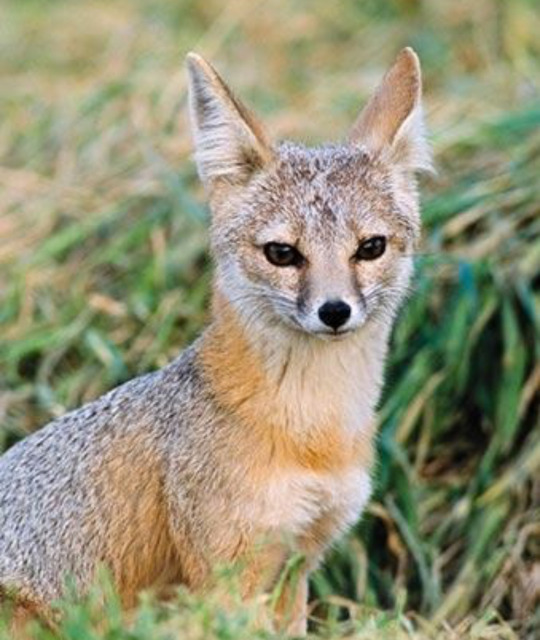

Crab Eating Fox [x] [x]


Swift Fox [x] [x]


Island Fox [x] [x]


Blanford’s Fox [x] [x]
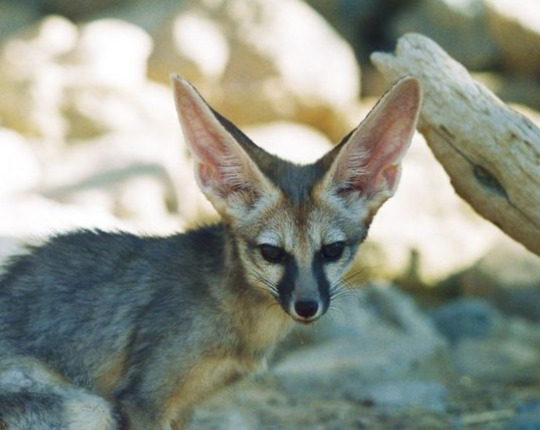
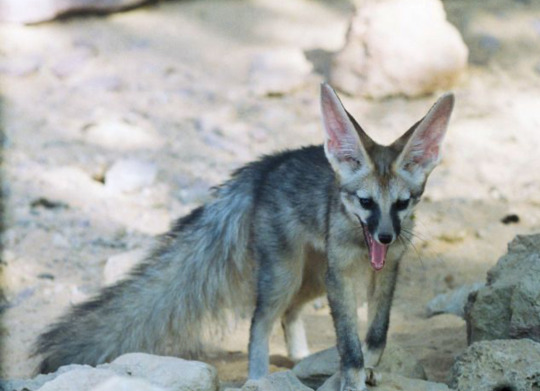
Hoary Fox [x] [x]


Sechuran Fox [x] [x]


Bengal Fox [x] [x]
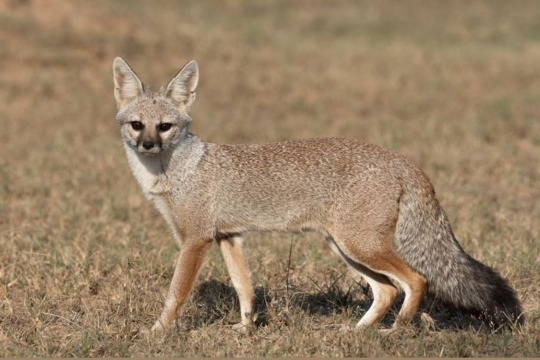

Part I
197 notes
·
View notes
Text

[The Countess], [Darwin], [Gabriel], and [a Banana Bat]!

#my art#bat art#Banana Bat#The Banana Bat#The Eastern Red Bat#Eastern Red Bat#The Hoary Bat#Hoary Bat#The Fruit Bat#Fruit Bat#Flying Fox#The Flying Fox#The Variable Flying Fox#Variable Flying Fox#bats#chiroptera#batties#batblr#digital art
39 notes
·
View notes
Text






it took me three whole episodes of watching this show to get invested enough to give them the Furrification Beam treatment, and twenty to actually have the energy to do them all...
anyway! explanations for all the species because I think SO hard about this stuff
haruhi is a white-throated sparrow. my immediate reason was for the absolute genderfuckery of these birds, where they essentially have four sexes (she's a tan-stripe). on-brand for her. sparrows also aren't the most showy of birds, alluding to her status as a commoner, and the lack of sexual dimorphism means she can get away with pretending to be a boy.
tamaki is a leopon. a lion was the obvious choice, but come on... that's too easy. I went with a leopon firstly for the colors and pattern: still yellow, to match his hair, but the spotting adds some flavor. and I made his rosettes... well, rose-shaped. and I didn't know it when I first made the design, but given tamaki's origins I think it's fitting for him to be a hybrid.
kyouya is a secretary bird, and you can all stop laughing at me for saying I don't want to take the easy choices and then making him a literal secretary! I can't help it. I love secretary birds. plus they're a nice balance of "elegant" and "could kick your fucking ass" so I think he deserves it.
the twins are hoary foxes, which despite the name aren't actually a kind of fox. too obvious. too easy. it's an extra fun layer to make them not what they seem at all. and something something brazil because my Brazil Mutuals just make me want to insert it into everything.
honey is a papillon, which I definitely didn't do because they were my favorite dog breed as a kid. but come on, look at him! it's perfect. he's an itty bitty little puppy. let me have this.
and finally mori is a doberman, which I admit is probably the least creative of the bunch. his design gave me the most problems out of all of them, for some reason.
#d.png#haruhi fujioka#tamaki suoh#kyouya ootori#kaoru hitachiin#hikaru hitachiin#mitsukuni haninozuka#takashi morinozuka#ohshc#pixel art#furry art#safe fur work#anime#manga#ouran high school host club#eye contact cw#furry high school host club
58 notes
·
View notes
Text
Bat of the Year 2024 || Full list of nominees
Here are the 20 nominees for Bat of the Year 2024:
Rafinesque's Big-Eared Bat (Corynorhinus rafinesquii)
Florida Bonneted Bat (Eumops floridanus)
Pallid Bat (Antrozous pallidus)
Common Pipistrelle (Pipistrellus pipistrellus)
Whalberg's Eppauletted Fruit Bat (Epomophorus wahlbergi)
Hairy Legged Vampire Bat (Diphylla ecaudata)
Pied Butterfly Bat (Glauconycteris superba)
Spix's Disk-Winged Bat (Thyroptera tricolor)
Spectral Bat (Vampyrum spectrum)
Canyon Bat (Parastrellus hesperus)
Indian Flying Fox (Pteropus giganteus)
Egyptian Fruit Bat (Rousettus aegyptiacus)
Honduran White Bat (Ectophylla alba)
Gould's Wattled Bat (Chalinolobus gouldii)
Srini’s Bent-Winged Bat (Miniopetrus srinii)
Mexican Free-Tailed Bat (Tadarida brasiliensis)
Hoary Bat (Lasiurus cinereus)
Trident Leaf-Nosed Bat (Asellia tridens)
Little Brown Bat (Myotis lucifugus)
Malaysian Flying Fox (Pteropus vampyrus)
57 notes
·
View notes